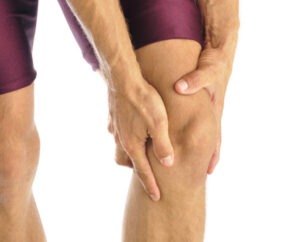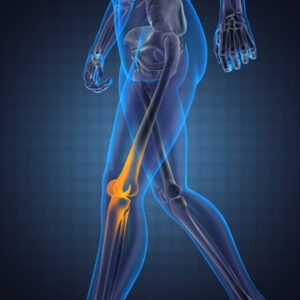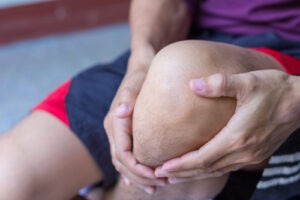 As we age, our bodies naturally experience wear and tear. One common area that can be affected is our knees. Whether due to injury, arthritis, or other conditions, many people eventually find themselves facing the decision of whether or not to get a knee replacement. But at what age is it typically necessary to undergo this procedure? In this blog post, we’ll break down the average age for needing a knee replacement and discuss factors that may contribute to this decision. So if you’re curious about when it may be time for a new knee, keep reading to find out more. At the practice of Steven C. Thomas, MD, Justin B. Limtong, DO and Donald W Pennington, DO. Our board-certified surgeons specialize in treating knee conditions in the Las Vegas area.
As we age, our bodies naturally experience wear and tear. One common area that can be affected is our knees. Whether due to injury, arthritis, or other conditions, many people eventually find themselves facing the decision of whether or not to get a knee replacement. But at what age is it typically necessary to undergo this procedure? In this blog post, we’ll break down the average age for needing a knee replacement and discuss factors that may contribute to this decision. So if you’re curious about when it may be time for a new knee, keep reading to find out more. At the practice of Steven C. Thomas, MD, Justin B. Limtong, DO and Donald W Pennington, DO. Our board-certified surgeons specialize in treating knee conditions in the Las Vegas area.
Understanding Knee Replacement Surgery
Knee replacement surgery, also known as knee arthroplasty, is a medical procedure that involves replacing a damaged or worn-out knee joint with an artificial implant. It is typically recommended for individuals who experience chronic knee pain and limited mobility due to conditions such as osteoarthritis, rheumatoid arthritis, or a knee injury.
During the surgery, the damaged cartilage and bone in the knee joint are removed, and the artificial implant is placed in its position. This implant is designed to replicate the function of a natural knee joint, allowing for improved stability, reduced pain, and increased range of motion.
Recovering from knee replacement surgery typically involves a period of physical therapy and rehabilitation to regain strength and flexibility in the knee. It may take several months to fully recover and experience the full benefits of the surgery.
It’s important to note that knee replacement surgery is a major procedure and should not be taken lightly. It is typically recommended when other conservative treatments, such as medication, physical therapy, or lifestyle modifications, have not provided sufficient relief.
If you are considering knee replacement surgery, it’s crucial to consult with a healthcare professional who can evaluate your individual case and provide guidance on the best course of action.
Breaking Down the Numbers: Average Age for Knee Replacement
When it comes to knee replacements, one common question is: at what age is it typically necessary? While there is no one-size-fits-all answer, we can break down some numbers to give you a better idea. According to studies, the average age for knee replacement surgery is around 68 years old. However, it’s important to note that age is just one factor to consider. The decision to undergo knee replacement surgery depends on a variety of factors, including the severity of your knee condition, your overall health, and the impact on your daily life. Some individuals may require a knee replacement at a younger age due to injuries or genetic factors, while others may not need one until they are older. Ultimately, the decision should be made in consultation with your healthcare professional, who can evaluate your individual case and provide guidance based on your specific needs.
Factors Influencing the Need for a Knee Replacement
When considering whether or not to undergo knee replacement surgery, there are several important factors that can influence this decision. One key factor is the severity of your knee condition. If you have advanced osteoarthritis or other degenerative conditions that significantly impact your daily life, a knee replacement may be necessary to improve your quality of life.
Another factor is your overall health. If you have existing health issues that could complicate the surgery or hinder your recovery, your healthcare professional may recommend against knee replacement. Additionally, your age can play a role. While age alone does not determine the need for a knee replacement, younger individuals may be more prone to injuries or have genetic factors that contribute to the need for surgery.
Lastly, the impact of your knee condition on your daily life is crucial. If your knee pain limits your ability to perform everyday activities or significantly affects your mobility, knee replacement surgery may be the right choice for you.
Remember, these factors should be discussed with your healthcare professional, who can evaluate your unique situation and provide guidance on whether or not knee replacement surgery is the best option for you.
Warning Signs: When It’s Time to Consider Surgery
If you’re experiencing chronic knee pain, it’s important to pay attention to warning signs that may indicate it’s time to consider knee replacement surgery. One key sign is the persistent and worsening pain in your knee, even with conservative treatments such as medication or physical therapy. If your pain is severe and significantly impacting your daily life, it may be a sign that surgery is necessary.
Another warning sign is a decrease in your mobility and ability to perform everyday activities. If your knee pain is limiting your ability to walk, climb stairs, or participate in activities you enjoy, it may be time to consider surgery.
Additionally, if your knee condition is causing joint deformity, instability, or swelling that does not improve with conservative treatments, surgery may be necessary.
Remember, these warning signs should not be ignored. It’s important to consult with your healthcare professional, who can evaluate your specific situation and determine if knee replacement surgery is the best course of action for you.
Contact Surgeons Dr. Thomas, Dr. Pennington, and Dr. Limtong at the Knee and Shoulder Institute in Las Vegas, NV to Schedule an Appointment:
If you would like to schedule an appointment or learn more about the Knee and Shoulder Institute procedures & treatments,contact the office today click here.
Serving patients from and around greater Las Vegas, Lake Havasu, Bullhead City, Mesquite, Pahrump, Nevada



 If you’re one of the millions of people who suffer from chronic knee pain, you may have considered a total knee replacement as a way to improve your mobility and quality of life. This common orthopedic surgery is a major decision, but for many, it can be life-changing. However, the road to recovery after a total knee replacement can be challenging. That’s why it’s important to have the right information and support to help you through the process. In this blog post, we’ll explore what to expect during recovery and share tips for a successful rehabilitation journey, straight from an experienced orthopedic surgeon.
If you’re one of the millions of people who suffer from chronic knee pain, you may have considered a total knee replacement as a way to improve your mobility and quality of life. This common orthopedic surgery is a major decision, but for many, it can be life-changing. However, the road to recovery after a total knee replacement can be challenging. That’s why it’s important to have the right information and support to help you through the process. In this blog post, we’ll explore what to expect during recovery and share tips for a successful rehabilitation journey, straight from an experienced orthopedic surgeon.  If you’re dealing with a
If you’re dealing with a  If you’ve recently experienced an ACL tear, then you know how debilitating and painful it can be. While there are many orthopedic surgeons that can help with the repair, it is essential to seek out an experienced knee specialist who specializes in ACL tears. A knee specialist will have the knowledge, skills, and expertise to properly diagnose and treat your ACL tear, helping you to return to optimal functioning as quickly and safely as possible. At the practice of Steven C. Thomas, M.D., Donald W. Pennington, D.O, and Justin B. Limtong, D.O.,
If you’ve recently experienced an ACL tear, then you know how debilitating and painful it can be. While there are many orthopedic surgeons that can help with the repair, it is essential to seek out an experienced knee specialist who specializes in ACL tears. A knee specialist will have the knowledge, skills, and expertise to properly diagnose and treat your ACL tear, helping you to return to optimal functioning as quickly and safely as possible. At the practice of Steven C. Thomas, M.D., Donald W. Pennington, D.O, and Justin B. Limtong, D.O.,  Are you living with Arthritis of the
Are you living with Arthritis of the  When it comes to
When it comes to